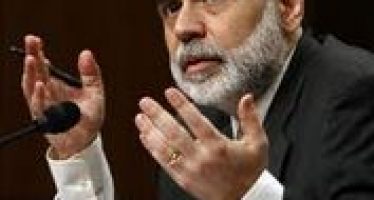Geoffrey Okamoto, First Deputy Managing Director of the IMF: Knightmare Uncertainty

Author: Geoffrey Okamoto, First Deputy Managing Director of the IMF
The American economist Frank Knight theorised about the difference between risk and uncertainty in his classic book Risk, Uncertainty and Profit. Risk is “a quantity susceptible of measurement.” A precise outcome may not be known, but the probability of a few that are most likely can be calculated. Uncertainty means there is not enough information to even narrow down the possibilities. When a situation is “not susceptible to measurement” economists call it Knightian uncertainty.
If this sounds familiar, it is because we are living in the most unmeasurable of times. All aspects of life have been disrupted by the simple fact that it is harder to quantify the risk of going to work, shopping for groceries, or having a wedding. Despite necessary optimism, there is great uncertainty about treatments for COVID-19 and a vaccine: when they may be available, how effective they will be, how willing people will be to take them. While it will take years to rebuild the economic devastation and restore jobs and growth, the pandemic will have a lasting impact on how we choose to live our lives. The 1920s economic chaos left many Germans traumatised about inflation to this day; Americans who experienced the Great Depression remained frugal throughout their lives. This pandemic could fundamentally change how we view and manage risk and uncertainty, with lasting consequences on investment decisions, business strategies, government policies, and overall economic productivity.
“High uncertainty makes it harder still to predict the net impact of so many behaviour changes.”
Individuals may change their risk perceptions permanently after a sharp and sudden loss of income, leading to higher precautionary saving. In the short term, this may mean less debt, but in the long term it could lead to deeper structural changes, such as less willingness to take on a 30-year mortgage. In many countries, home ownership is low because long-term debt is seen more as a risk than an opportunity. Consumption patterns may change if people whose health is at high risk avoid certain activities. Consumers may decide to hold more essential goods in fear of new lockdowns—good news for toilet paper manufacturers, at least! But what about a young woman who has mulled over a transformational business idea night after night at her kitchen table, but whose now-heightened aversion to risk means a business is never started, employees are never hired, and products are never launched? High uncertainty makes it harder still to predict the net impact of so many behaviour changes.
Companies also face a new set of uncertainties. US carmakers have experienced parts shortages because the Mexican state of Chihuahua, where many suppliers are based, has limited factory attendance to 50 percent of employees. Such disruptions may lead manufacturers to diversify their supply chains or keep more inventory on hand. Employee health is another new operational risk. Will companies decide to rely more on automation as a result?
Changing suppliers, keeping more inventory, and needing to invest in more advanced machinery all bear costs for manufacturers often operating on thin profit margins. But raising prices in a recession is also difficult. For goods deemed “essential,” like medical supplies, countries may change regulations or subsidise domestic production, altering the competitive landscape. Similar to households, companies hit by a sharp drop in revenue may keep higher liquidity buffers. Some changes may be quantifiable once shifts in production stabilise and the impact on earnings becomes clearer, but uncertainty will remain for a long time for many companies.
Market volatility, defaults, and evolving regulation will change the landscape for the financial sector. The extreme swings in market conditions and asset prices seen early in the outbreak will change risk management models, with impacts on liquidity and capital buffers held to manage such risks. Regulations may also change, as policymakers seek to prevent a recurrence of the volatility and reduce the need for central bank interventions to preserve market functioning. Moreover, the recession will increase losses.
Economic policymakers are confronted with an intricate new puzzle: how to finance higher spending demands amid falling revenue and ballooning debt. Without a solution to the health crisis, governments will be dealing with unmeasurable variables in trying to plan the future. Private sector interventions through guarantees or direct ownership may have lasting and hard-to-quantify implications for competition and private risk-taking, beyond the immediate impact on public sector balance sheets
What does all this mean for the IMF? We have been called to action like never before, providing emergency support to a record number of countries within a short time frame. We have introduced new support facilities and expanded the borrowing limits on existing ones.
The IMF faces new operational challenges. Many countries have requested financial assistance to weather this storm. Some have challenging debt loads, where sustainability is hard to measure amid elevated uncertainties about growth and trade prospects. And if some countries do need to renegotiate their debts in a post-COVID world, the private sector will have to play a larger role in providing financing assurances to reduce uncertainty, given its increased importance as a creditor. Our members are also asking for policy advice and for help developing the capacity to cope with this severe shock. We must respond while still largely working remotely and unable to travel. Similar operational restrictions have challenged production of one of our key raw materials: timely and accurate country statistics.
In fact, one of our core functions, economic surveillance, has had to reinvent itself. Going back to Knight’s concepts, much of our work focuses on measuring and addressing quantifiable risks. We use macroeconomic data to create baseline scenarios and estimate their likelihood. Following the global financial crisis, the approach had already been broadened by developing various scenarios and analysing their probability so as to better understand the risks around numeric forecasts.
The size and simultaneity of the pandemic shock make for extreme Knightian uncertainty and ever-changing landscapes. We have had to become more agile in that regard. When the infection was still a suspicious pneumonia outbreak in China, we reached out to epidemiologists to learn how to combine their forecasting models with ours. New sources of big data were incorporated to understand consumer behavior changes where traditional statistics fell short. Even before the pandemic, we had started using military-style simulations to study escalating trade tensions. The approach has proved helpful as we attempt to quantify new risk.
Some time ago, I came across an article about how a US epidemiologist teamed up with a German reinsurance company to develop pandemic insurance product. They designed health models and early warning systems, estimated the economic impact for vulnerable industries, and determined how to distribute the risk. The policy became available in late 2018, but potential clients found it too expensive for such an unlikely event. When the catastrophe materialised in early 2020, it was too late to buy insurance.
This cautionary tale shows how much we need to improve risk assessment and management. Manufacturers, for example, must strike a balance in their supply chains between just-in-time (cheaper but inflexible) and just-in-case (more resilient but costlier) methods while factoring in trade, logistics, and sanitary conditions. Going back to the old ways seems reckless; erring too much on the resilience side might decrease the productivity of the economic engines.
Finding this new equilibrium between risk and resilience when there is so much uncertainty is a challenge we will face far into the future. It will require effort, patience, and innovative thinking. Fundamentally we will need more global cooperation. Everyone will be safe only when each one is safe. Only by working together will we overcome the massive uncertainty and the economic turmoil caused by this mighty microscopic scourge.
Opinions expressed here are those of the authors they do not necessarily reflect IMF policy.
You may have an interest in also reading…
Uzbekistan’s Dynamism Presents New Opportunities for Post-Brexit Britain
Though 5,000 km apart, the UK, an economic leader in the world, and my emerging but fast-developing nation are quietly
The Fed’s Flawed Model
In May 22 testimony to the Joint Economic Committee of Congress, Fed Chairman Ben Bernanke issued another of many similar
British Referenda and Europe: Patience Is a Conquering Virtue
Afflicted by a veritable referendum craze, Britain seems set to question its very existence. In the wake of a stunning



















































































